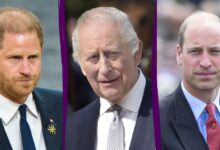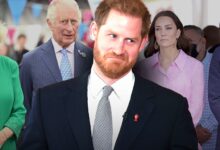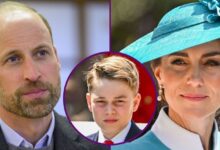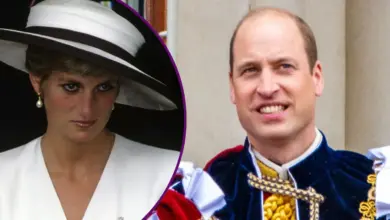Prince Harry and Meghan Markle’s ‘quasi-royal tour’ of Colombia puts King Charles in a tricky spot
The Duchess and Duke of Sussex have just wrapped up a four-day tour to Colombia. (Supplied: Le Studio Photography)
It’s easy to be cynical about Harry and Meghan’s four-day trip to Columbia.
It had the look and feel of a royal tour with one important difference: the couple doesn’t work for the royal family.
When Buckingham Palace first announced that the Duke and Duchess of Sussex would “no longer be working members of the royal family”, it was the late Queen Elizabeth II who underlined that her grandson and his wife would “not continue with the responsibilities and duties that come with a life of public service”.
It was a statement that irked the couple. “We can all live a life of service. Service is universal,” they chided. In the three years since that war of words, Harry and Meghan have moved to California and set up their own not-for-profit outfit, The Archewell Foundation, with a mission statement of “Show Up, Do Good”. The latest iteration of that mantra seems to involve overseas tours.
The first was the well-received visit to Nigeria in May earlier this year. Meghan recently revealed her Nigerian heritage, and the tour was firmly linked to Harry’s Invictus Games, Nigeria being one of the countries sending athletes to the sporting competition for wounded members of the armed forces.
The motivations to visit Colombia are a little woollier.
Why the tour puts the King in a tricky spot
Foreign tours are cornerstones of royal work, an important set piece of soft diplomacy carried out on behalf of the British government and people.
The King, then Prince of Wales, and Camilla visited Colombia in 2014; Princess Anne toured in 1997; and last November Sophie, the Duchess of Edinburgh, was there on the latest official royal visit, made at the request of the British Foreign Office to support the Women, Peace and Security Agenda. Sophie Edinburgh’s tour was focused and low key, highlighting her work with survivors of conflict-related sexual violence and the rights of women and girls.
The problem with Harry picking up the tour torch is that as a prince who also happily uses his Duke of Sussex title (and the Meghan, the Duchess of Sussex title), he could be seen as representing the monarchy and therefore Britain with the possibility of diplomatic incidents a concern.
But since Harry doesn’t work for the “Firm” anymore, he can’t be advised or controlled by the UK government, which puts the King in a tricky spot: How can he stop his son and daughter-in-law from wandering the globe at will on what many see as quasi-royal jamborees? And how can he communicate those worries to the Sussexes when the family rift appears so cavernous?
That Harry and Meghan are free agents — in that they no longer answer to Harry’s father, his brother or the “men in grey suits” that the prince has suggested run the monarchy — has never been more obvious. The fact that Harry chose to make this visit in the royal holiday period when the family mostly retreats from the public eye could be seen as a sensitive move to prevent clashes with official royal engagements, or as grandstanding in the void. It really depends on how you view the couple and their work. And this is Harry’s problem: he’s damned either way.
He would argue these are not royal tours, but part of his and Meghan’s humanitarian work. And while there are many on social media who think all he does is think up ways in which he can get back at his family, the fact is Harry and Meghan were personally invited on this tour by Francia Marquez, the vice president of Colombia — who also hosted the Duchess of Edinburgh when she visited in November. So this VP does know the difference between the working royal family and the Duke and Duchess of Sussex, who hail from Montecito.
Marquez, 42, is the country’s first Afro-Colombian vice president, a human rights and environmental activist and lawyer, and the nation’s first minister for equality. She is also a bit of a fan of the Duchess of Sussex and first invited her to Colombia a year ago to take part in an event to mark International Afro-descendant women’s Day.
Meghan couldn’t make it but wrote back saying she was eager to “get to know our country” said Marquez at a press conference ahead of the couple’s arrival. “Since then we have been working for a year to achieve this visit, which is so important and good.”
Although they’re not as well-known in Colombia as they are in the US — indeed some of the passers-by interviewed by journalists didn’t have a clue who they were — Marquez was certain that a visit by the power couple would “illuminate Colombia’s role as a beacon of culture and innovation”.
Marquez said she had been especially inspired to reach out because of Harry and Meghan’s TV six-part TV documentary. “I saw the Netflix series about their life, their story and that moved me and motivated me to say that this is a woman who deserves to come to our country and tell her story and her exchange will undoubtedly be an empowerment to so many women in the world,” she told reporters.
Royal media not invited to Colombian tour
The tour started in the capital Bogota and took in the Caribbean and Pacific regions of Cartagena and Cali. It certainly had the framework of a royal visit with a series of engagements with carefully crafted photo opportunities.
One important change in “protocol” for Harry was that royal rota media were not invited. This is the press corps, some of whom work for the British newspapers, he is currently locked in legal battles with, so it’s hardly surprising he didn’t want them along.
Instead there was just one official reporter, a digital journalist from US Harpers Bazaar, who provided press release style articles from each day which were shared by Harry and Meghan’s team, with the content no doubt pre-approved.
For Harry and Meghan, a key focus was to highlight a new initiative they are working on surrounding online environments for children — cyberbullying, online exploitation and their mental health impacts.
The vice president spoke about her own experiences with digital harassment and said that she hoped society could strike a better balance when it comes to the media climate and online platforms that affect mental health — a topic close to Prince Harry’s heart.
In San Basilio de Palenque, which was established as the first free African town in the Americas in 1619, Meghan and Harry greeted community leaders in Spanish and Palanquero, the local Indigenous language. Meghan said she was “so honoured” to be there while Harry described the visit as an “incredibly moving experience”. Later Meghan spoke again in Spanish at a forum to rapturous applause.
The tour included some lovely salsa dance moves from Harry and Meghan who seemed to be having a ball, lessons in local drumming, panel discussions on fostering safer online communities for children, a game of volleyball with Colombia’s Invictus Games team and plenty of opportunities for the couple to meet local people, especially children and young people.
The vice president seemed delighted with her royal visitors. “I wanted them to come here and discover the essence of who we are — our spirituality, our music, our culture and our ancestral heritage that is still very much alive today,” she said.
It’s not clear who funded the trip — whether the Sussexes paid their own way or the Colombian government picked up the tab — but if the aim was to raise awareness for Colombia that was certainly achieved with photos hitting media around the world.
Critics carped that it was hypocritical of Harry to happily take his wife to Colombia when he claims it’s too dangerous for her to visit the UK, but it’s worth noting that security around the couple was reportedly extremely tight and certainly more numerous than he would receive as a VIP in the UK.
It’s highly likely there will be more Sussex tours on the horizon with Commonwealth countries surely on the list, which is likely to create more headaches back in the UK. Some commentators have suggested the only solution is for Harry and Meghan to be stripped of their titles to avoid being seen as royal emissaries.
Such a move would only deepen the family rift and when seen in context of what looked like a happy visit, is the House of Montecito really such a threat?




